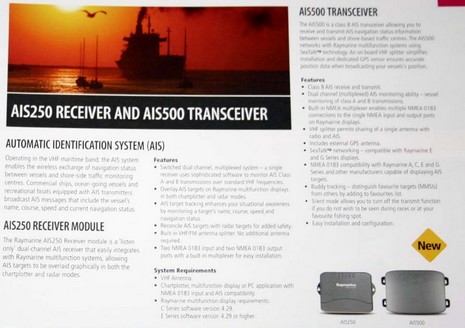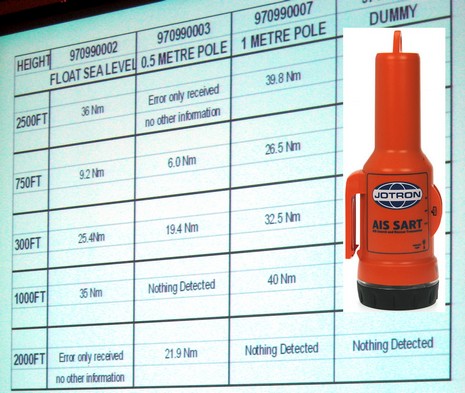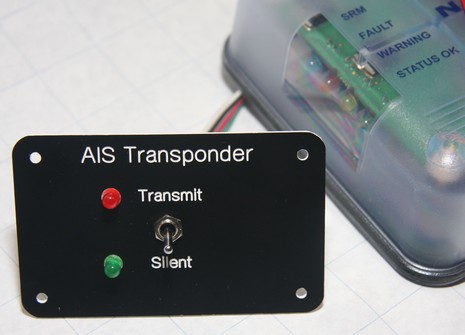Class B rollout, looking better, but mysterious
Ever since I realized that the free Siitech.com AIS pro web viewer can count and/or filter AIS types, I’ve been using it occasionally in an attempt to gauge the spread of Class B in...
Ever since I realized that the free Siitech.com AIS pro web viewer can count and/or filter AIS types, I’ve been using it occasionally in an attempt to gauge the spread of Class B in...
Thanks to Sandy Daugherty over on the Forums, I now know that JRC has introduced a VHF radio series that can easily make direct DSC calls to AIS targets. They are most definitely big ship radios (see diagram below), and they do AIS calling in a way I hadn’t anticipated, but still…
I wished I’d clicked on one of those AIS targets before I took this screen shot, so you could see how CE 2009 displays their properties, but our focus (after the reboot affair) was...
In the screen above I was testing Coastal Explorer 2009 with AIS target data coming in from a shore receiver network via an IP feed. It was neat to watch the pilot boat rendezvous with a ship inbound to Narragansett Bay, and it showed off CE’s ability, like NavSim’s, to dead reckon targets (note how it’s using COG, not heading), as well as track them and pop up useful info with a mouse click (or finger tap). But good data and good data presentation like this could be used for very bad purposes. Despite all the discussion of Somali pirates last week, I didn’t hear anything about whether or not they use AIS to rendezvous with their targets…but I’m not surprised that they do, and that the crews thus exposed are pretty pissed off about it!
At the Miami Boat Show, NavSim Technology was showing some neat AIS plotting features, and yesterday I got them to send some illustrative screen shots. In the lower right “secondary chart view” above you can see how NavSim uses yellow, green, and red target icons to show moored, moving, and dangerous vessels (a full explanation of AIS icons here, and special Class B icons are coming soon). You can also see…
If I understand the timing correctly, about when Raymarine starts shipping its new AIS 500 Class B transponder in May, it will also offer software updates for A, C, E, and G Series MFDs that provide some AIS plotting improvements. On top of the list is “buddy tracking”, which I consider a valuable feature, though the term — used by several manufacturers — is a bit misleading…
Thanks to an angelic Panbot, I’ve now read pertinent sections of IEC 62288, a.k.a. “Maritime navigation and radiocommunication equipment and systems – Presentation of navigation-related information on shipborne navigational displays – General requirements, methods of testing and required test results.” It’s a hundred pages (preview PDF here) laying out in great detail the minimum requirements for how all new radars going on SOLAS ships will perform and present data. Perhaps most important among many mandated enhancements is the treatment of AIS targets, Class B included, putting them on essentially the same level of safety value as radar targets. I think these standards are good news not only for the bridge teams on big ships, but also us little guys who sometimes travel amongst them (despite the consternation that came up yesterday)…

Given the new C Series Widescreens and ST70+ displays, and my mid-week absence (moms happen!), let’s just call this Raymarine New Stuff Week. Behold the AIS500, which just may be the easiest-to-integrate-into-your-system Class B transponder yet…

My coverage of the NMEA Conference last October was dominated by Class B AIS (and largely—doh!—a vessel naming issue that turned out to be immaterial). But in fact I also learned how AIS is getting into all sorts of marine systems, and…

Most Class B AIS units have an SRM/Silent Mode switch on their casing, but the ACR Nauticast B instead provides a wire to a user-supplied switch. The plus is…